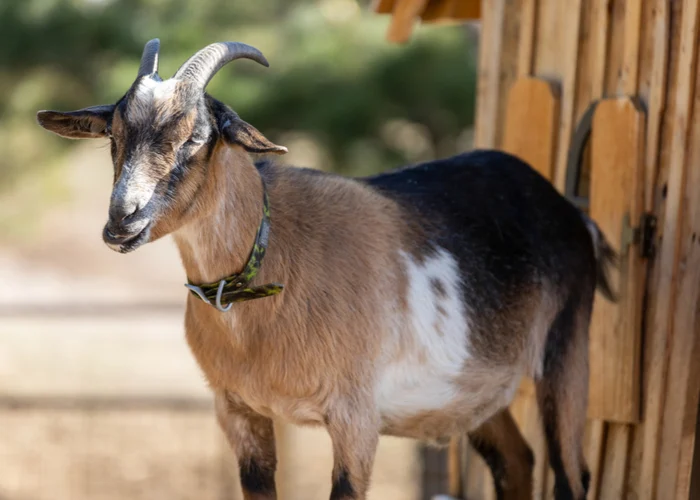
Description:
The Spanish goat, often known as the brush goat, has horizontally positioned, somewhat long ears. The goat’s ears are situated along its face, close to its head. The body is huge yet still compact, and the meat is well-conformed. Spanish goats have many varied hair colors, and the hue is frequently not restricted to a single shade. Some goats are black and white, while others have various brown tones. They are notable for having lengthy horns that swoop forward and outward. The tips of their horns also have a propensity to twist somewhat.

Behavior:
Spanish goats are herd animals, meaning they enjoy sticking together. They do not fare very well alone and are often not particularly social with humans, which is why it can frequently be tough to handle them. They are also not typically domesticated globally for this reason.
As these goats are less tamed than others, the goat herders may find it challenging to control them. It is frequently claimed that catching them for grooming purposes can be challenging. The Spanish goat is a relatively resilient animal that can endure a variety of challenging environmental circumstances. They can also breed outside of their typical breeding season, producing a wonderful variety of creatures.
Benefits/Uses:
Although they can also produce milk, the Spanish goat is mostly bred for the production of meat. The production of milk eventually aids in the creation of various cheeses.
Origin/History:
Traditional Spanish domestic goat breeds include the Verata. The Verata is a traditional and diverse breed of goat that originated in the Tagus depression in western central Spain. The Montes de Toledo and the western Sistema Central form its southern and northern borders, respectively. Traditionally, it was raised in the Sierra de Gredos, which is located where the provinces of Toledo, Cáceres, and Vila converge. The breed was partially relocated from its comarca of origin, La Vera, into the southern comarca of Navalmoral de la Mata around the end of the twentieth century.
Keeping as pet:
- Enclosure
Spanish goats need fence against snow, rain, high heat, and wind just like other species do, despite the fact that they are all-weather animals. Nonetheless, because they are resourceful beings and need lots of room to move around and exercise, they don’t need opulent housing. As a result, your fence needs to be sturdy to withstand any damage the goats may do.
Because this species can jump so high, the enclosure should be at least 4 feet (maybe 5 feet) high. Also, it needs to be secure enough to stop animals from pushing it down. These goats would try anything to escape a confined space, especially if there is food on the other side that attracts them. To keep them in as much as possible, secure the fence firmly in the ground and space the posts no more than 8 feet apart.
- Temperature
The Spanish breed of goat is tolerant of high temperatures. To collect body heat to keep them warm throughout the cold season, you should lay the shelters’ roofs a little lower than normal in the ground.
- Lighting
These animals favour well-lit environments. The pens should therefore contain windows and apertures to provide adequate lighting and ventilation.
- What to Feed Your Spanish Goat Breed?
Despite the fact that these goats can thrive on poor pasture, you should try to offer them enough food and access to clean, fresh water. Because Spanish goats produce less milk than other goat breeds, they don’t need as much water during lactating. Yet, they do require sufficient feeds and minerals for the infants. To avoid pregnancy toxemia, don’t overfeed Spanish goats when they are pregnant.
Spanish goats are browsers and will happily eat weeds, bark, shrubs, and herbs. In order to reach leaves, they can also climb trees. Providing them with independence will enable them to search for grass while getting exercise. If you don’t have access to enough grazing land, feed healthy animals high-quality alfalfa hay and high-quality milk instead. This hay is a good source of calcium, which goats need, especially during pregnancy and lactation.
Table





